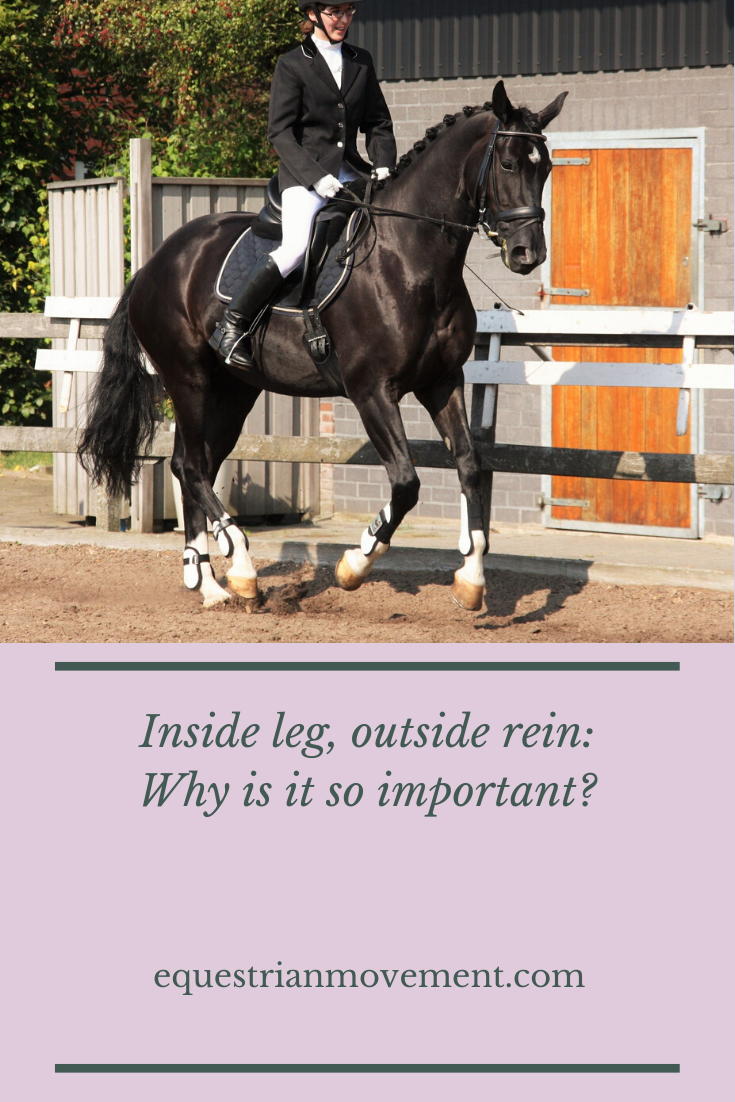Inside Leg, Outside Rein
Why is this touted as being so important?
Inside leg to outside rein is considered the holy grail of riding, especially in dressage.
But it is just one piece of the puzzle.
Part of the reason it is touted to be so important is because it is often the first time a rider feels how the rein contact can affect hock flexion.
When the rein contact connects to the hindquarters instead of just the head placement, the movement and the horse comes so much lighter, softer and more balanced. It can truly feel like a magical moment that we pursue again and again.
One of the problems that commonly comes up with the development of inside leg to outside rein is that our horses love to cheat! They love to find the best way of keeping us happy with minimal effort on their behalf, and so instead of sitting deeper into their haunches they twist their pelvis. We will find our inside leg to outside rein normally works really well one way (normally the left), the direction our horse likes to bend to and not so well the other way.
We feel it not working so well because we have too much weight in the inside rein and no weight in the outside rein (normally the right). This is often not picked up by the rider though, because most of us are right handed and more comfortable feeling the extra weight in the right hand and not the left.
Inside leg to outside rein is also where we learn how to drive into contact. It starts us down the pathway of elevation and impulsion. Because it shows both us and our horse how to stay sitting in the haunches and push off their haunches, we start to learn how to recycle the energy and establish connection.
When we establish connection we start to communicate through our seat, and this is where we really start to refine the art of riding. However, if our horse is working twisted through the pelvis, we end up getting stuck and feeling like we are going round and round in circles - never moving forward.
So not only do we need to be able to ride inside leg to outside rein but we also need to be able to ride outside leg to inside rein, inside leg to inside rein and outside leg to outside rein. Because what we are truly doing when we ride inside leg to outside rein is connecting the action of the hind leg to the flexion of the rein. This can then shorten and lengthen the stride, collect, elevate and create impulsion. And what we are truly establishing when we connect the rein contact to the hock flexion is throughness, straightness and balance. We are asking our horse to distribute their weight evenly onto all 4 legs which engages their postural muscle and the core.
The whole purpose of dressage, the art of riding, is to lengthen our horses career through movement. That career is established by our horses musculoskeletal health, and their musculoskeletal health is dictated by the strength of their core and the suppleness of their back.


